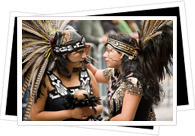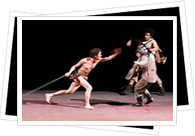
The history of performance and theatre in Mexico dates back to the Aztecs.
Although there is no written works or translations of the Aztecs, early missionaries have documented seeing the Aztecs, dance, sing and perform.
Early Mexican theatre developed from Spain from just after the Spanish invasion and Spain continued to influence theatre in Mexico until the Mexican revolution in the early part of the 20th century.
War led to the decline in Mexico's theatre traditions in the first part of the 19th century. Spanish classicism, European romanticism and then nationalistic pieces all took their turn as the main feature reflected in Mexican theatre.
The early 1900's were a boom time for the Mexico theatre. The Gran Teatro de Ópera was built at a time when Mexico city and surrounding provinces saw dramatic companies thriving. With plenty of training available, there was a constant supply of talent available to maintain increased demand for theatrical performances.
Carpas (tent shows) where humourous plays were acted out provided the perfect opportunity for new thespians, rather than working in the old theatres which had been left in a state of disrepair.

The 20th century notably saw Mexican nationalism reinforced in the theatre as Mexican Spanish became the language used for writing plays. Experimental theatre developed and then realism, leading to dominant pieces written by Mexican playwrights.
The new century has seen further development to dramatical works in Mexico. Theatre has evolved to reflect the different voices, cultures and identities found within the country. Previous writers tried to discover Mexico's voice and writers of the last decades are acknowledging the melting pot that is the modern day country.
Folklore and violence which had been the bread and butter for Mexico for so long as it finally competed with international theatre, has been left behind as the country has found its unique voice is a culmination of voices.